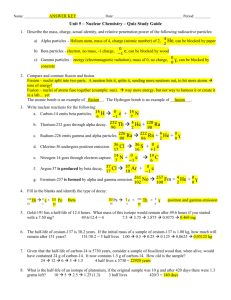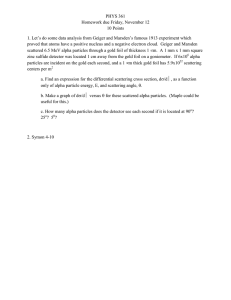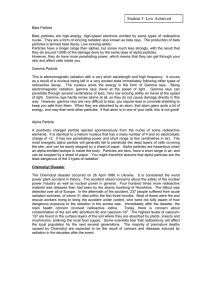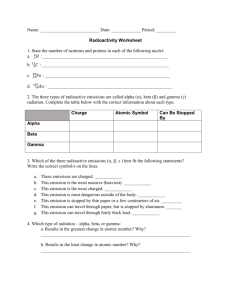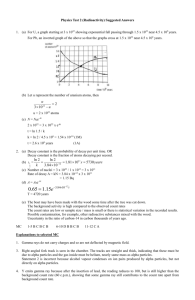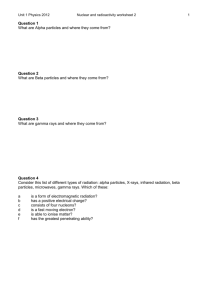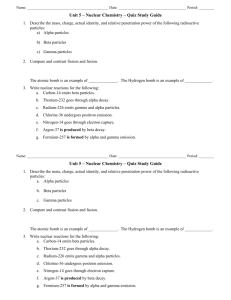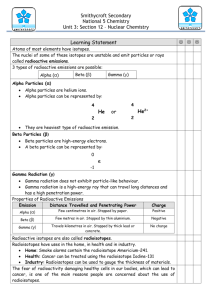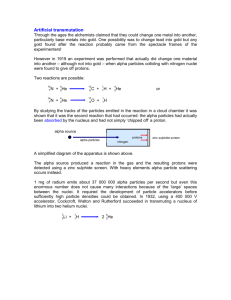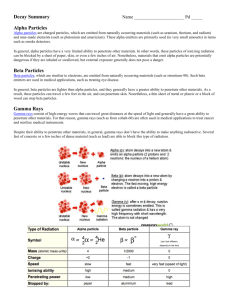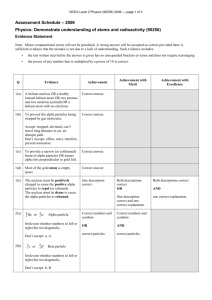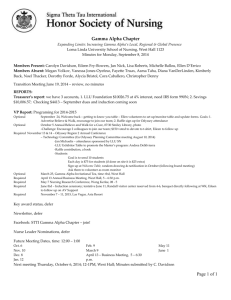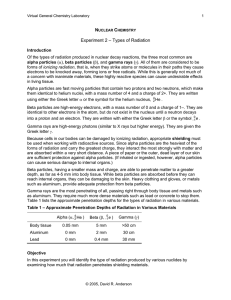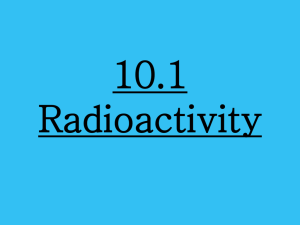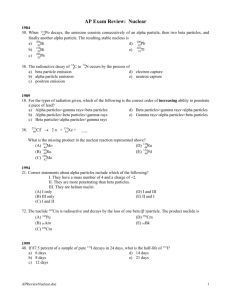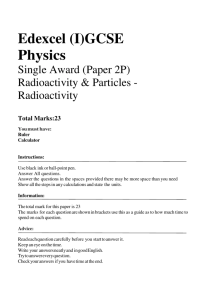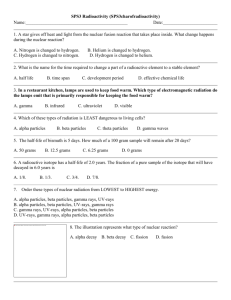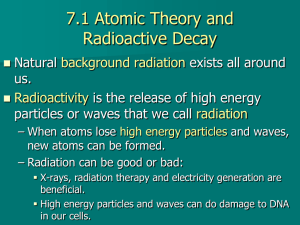Nuclear Radiation 2
advertisement
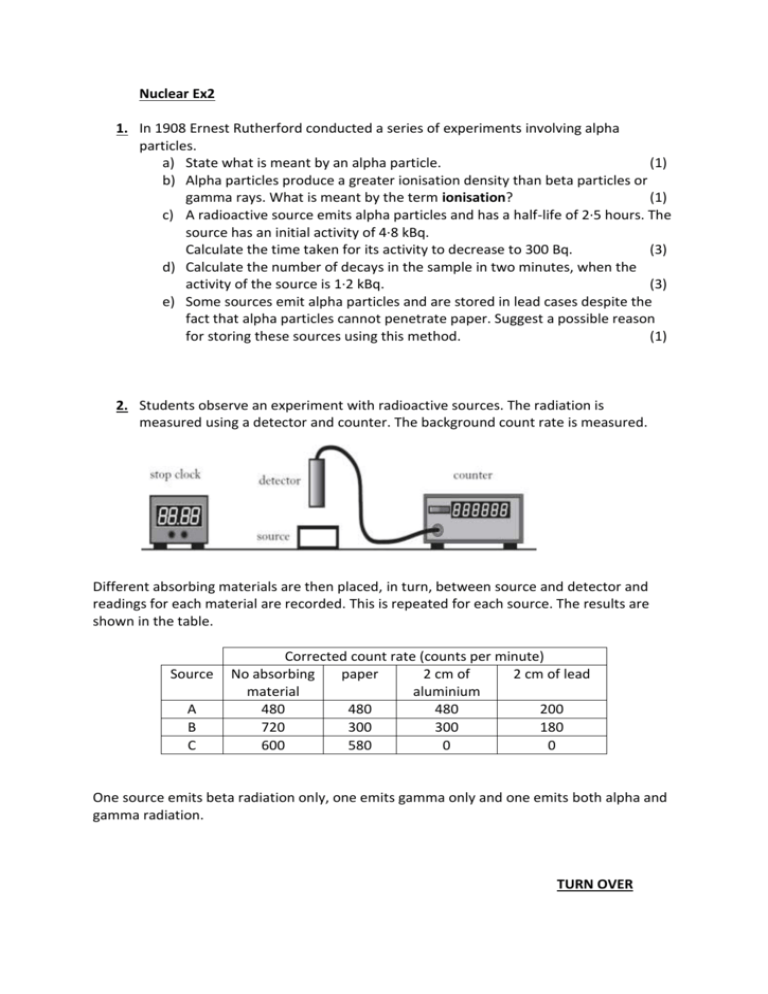
Nuclear Ex2 1. In 1908 Ernest Rutherford conducted a series of experiments involving alpha particles. a) State what is meant by an alpha particle. (1) b) Alpha particles produce a greater ionisation density than beta particles or gamma rays. What is meant by the term ionisation? (1) c) A radioactive source emits alpha particles and has a half-life of 2·5 hours. The source has an initial activity of 4·8 kBq. Calculate the time taken for its activity to decrease to 300 Bq. (3) d) Calculate the number of decays in the sample in two minutes, when the activity of the source is 1·2 kBq. (3) e) Some sources emit alpha particles and are stored in lead cases despite the fact that alpha particles cannot penetrate paper. Suggest a possible reason for storing these sources using this method. (1) 2. Students observe an experiment with radioactive sources. The radiation is measured using a detector and counter. The background count rate is measured. Different absorbing materials are then placed, in turn, between source and detector and readings for each material are recorded. This is repeated for each source. The results are shown in the table. Source A B C Corrected count rate (counts per minute) No absorbing paper 2 cm of 2 cm of lead material aluminium 480 480 480 200 720 300 300 180 600 580 0 0 One source emits beta radiation only, one emits gamma only and one emits both alpha and gamma radiation. TURN OVER a) Copy and complete the following table to identify the source. Type of radiation Beta only Both alpha and gamma (2) Source b) One source has a half-life of 30 minutes. The source has an initial activity of 18000 Bq. Calculate its activity after 2 hours. (3)
